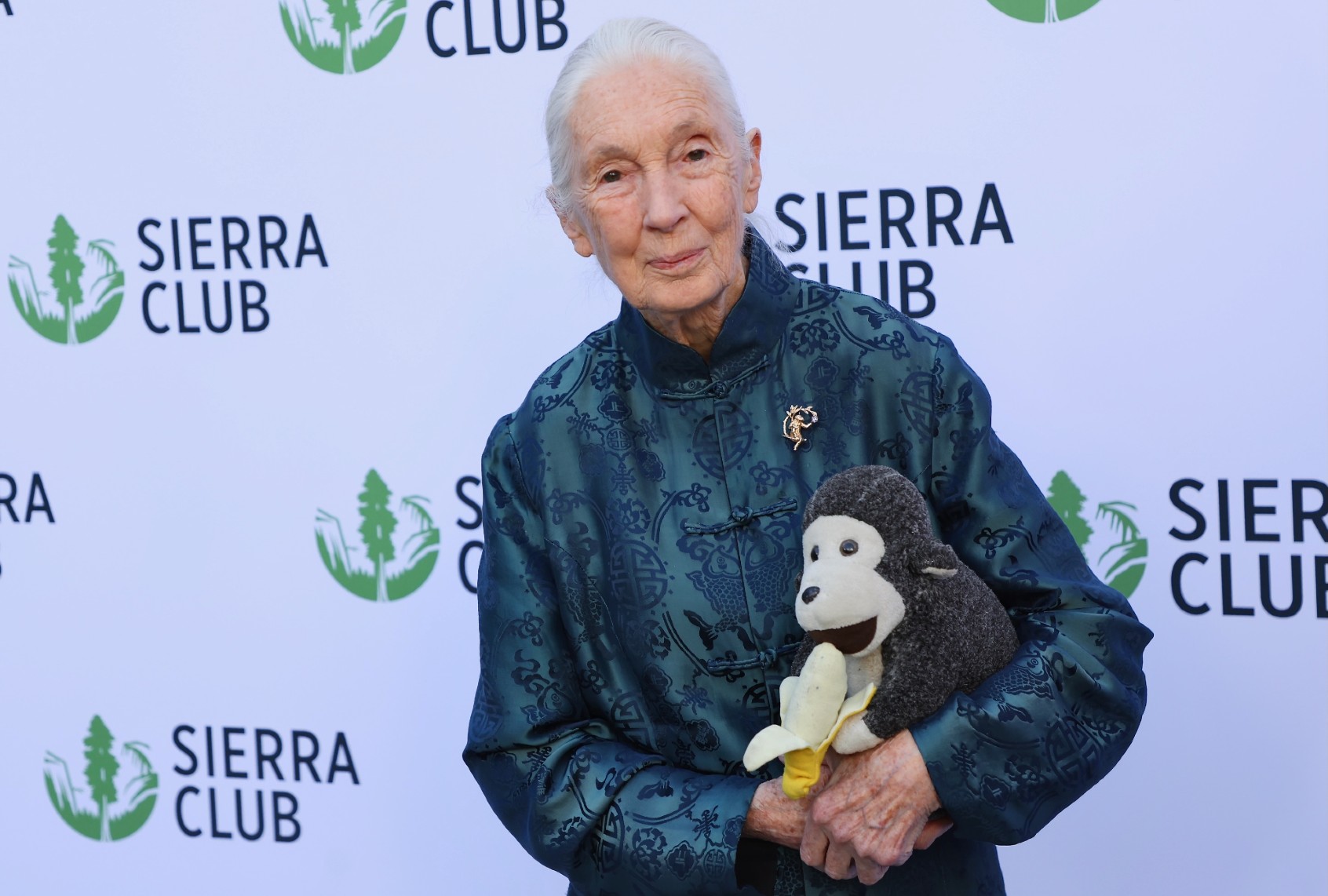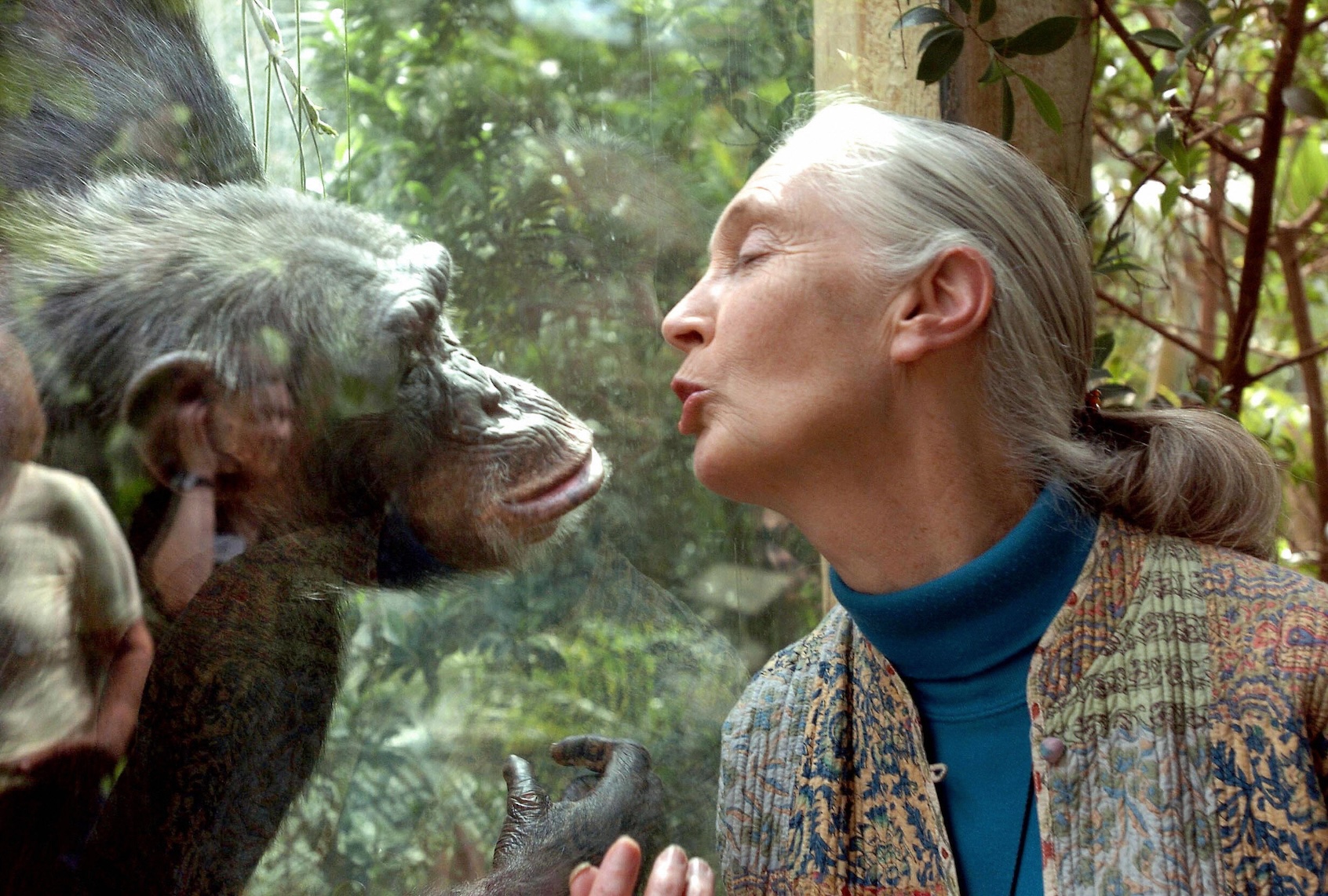Jane Goodall’s work with chimps changed how we see humanity
Jane Goodall, an iconic figure in conservation whose work transformed human-animal relations, is perhaps best known for the trailblazing research she carried out with chimpanzees at Gombe Stream National Park, in what is now Tanzania. Almost everyone reading this will recognize the slender, ponytailed figure who became a close friend and protector of the simian species most closely related to ours. Goodall died on Wednesday at age 91, reportedly of natural causes, while on a speaking tour in California.
If Reddit is to be believed, a “Far Side” cartoon in 1987 that made impolite suggestions about Goodall’s relationships with chimps earned cartoonist Gary Larson an angry letter from the executive director of the Jane Goodall Institute. But Goodall herself, like many scientists, was a “Far Side” fan and responded with good humor: “Wow! Fantastic! Real fame at last! Fancy being in a Gary Larson cartoon!” She went on to write the introduction to the fifth “Far Side” compilation. The anecdote speaks both to Goodall’s truly iconic status and to her unfussy, unbureaucratic and highly adaptable personality, which made her so well-suited to the work she did at Gombe. Not to mention her keen sense of humor (demonstrated by the “chimp-slap” Goodall gave a different comics artist).
Perhaps these qualities also prepared her to weather the slings and arrows of international NGO leadership and public speaking. Once Goodall realized, in the 1980s, that deforestation was rapidly putting the habitat and lives of the chimpanzees of Gombe at risk, addressing that issue became her principal mission, and she left Tanzania to travel the world with the goal of protecting them.
Goodall was born in 1934 in London, as Valerie Jane Morris-Goodall. From early childhood she loved both reading and animals from early childhood, and had many living family pets as well as a beloved stuffed chimpanzee, a gift from her father. Her “first animal research program,” according to her mother, was a study of earthworms to determine how they were able to move without legs, a project she carried out in her bed.
In 1957, Goodall visited a school friend’s family farm in Kenya. She was then working as a waitress and secretary, but already had dreams of living among animals in Africa. She telephoned famous anthropologist Louis Leakey out of the blue just hoping for some advice. That turned into an offer of secretarial work, and then a far more adventurous gig as an observer. Leakey wanted Goodall to live among a group of chimpanzees and study them, in the same way that anthropologists study human groups by observing their daily lives, rituals and behavior.
It took two years for Leakey to secure funding for Goodall, but eventually she and her equally intrepid mother set up camp in what was then known as the Gombe Stream Chimpanzee Reserve, on the shores of Lake Tanganyika. It was Leakey’s insight that younger women who had not been indoctrinated in the male-dominated norms of anthropology would make the best possible observers, and Goodall became one of the great trinity of primatology research, along with Biruté Galdikas, who studied orangutans and is now a professor in Canada, and Dian Fossey, who studied mountain gorillas in Rwanda until she was murdered by poachers in 1985.

(Robin L Marshall/Getty Images) Dr. Jane Goodall at Sierra Club’s 2025 Trail Blazers Ball in Los Angeles, April 2, 2025.
Goodall founded the institute that bears her name to expand and carry on her work with chimps — a project that has been running for nearly 65 years — and, just as important, to educate humans. The Jane Goodall Institute points to six important findings its founder made that have transformed the human understanding of chimpanzees, our closest relatives in genetic terms, by demonstrating that behaviors previously thought to be uniquely human were, in fact, nothing of the kind.
Goodall’s findings have transformed the human understanding of chimpanzees, our closest relatives in genetic terms, by demonstrating that behaviors previously thought to be uniquely human were, in fact, nothing of the kind.
In 1960, during her first year at Gombe, Goodall observed a chimpanzee she called David Greybeard carefully strip a twig of leaves and use it to root out tasty termites from a mound. That might seem commonplace now, but it was a Eureka moment for Goodall: Like humans, chimpanzees not only use tools but actually make them. As Leakey memorably put it, “Now we must redefine ‘tool,’ redefine ‘man’ or accept chimpanzees as humans.”
Chimps, Goodall went on to discover, are omnivorous, just like us. They had previously been characterized as entirely herbivorous, like gorillas, Goodall observed them hunting, killing and eating small mammals such as bush pigs and colobus monkeys, by any standard a complicated collaborative enterprise. Indeed, the Jane Goodall Institute now runs a longstanding baboon research project based partly on the fact that baboons are important chimpanzee prey. Chimpanzees are like us in more troubling ways as well, Goodall found; they sometimes wage war on rival groups of chimps, occasionally killing each other. Goodall’s institute works on conservation of chimpanzee habitat and best conservation practices globally, and now has a youth outreach program called Roots & Shoots in 70 countries around the world.
Start your day with essential news from Salon.
Sign up for our free morning newsletter, Crash Course.
At Gombe, where she established a research center in 1965 and helped train generations of primate researchers and ecologists, Goodall made minutely detailed observations of daily interactions between chimps, many of them strongly reminiscent of human behavior. Female chimps form close bonds with their babies, but if a mother dies the babies are often adopted by other community members. Goodall also witnessed chimpanzees embracing and comforting each other after the death of a loved one.
”Jane Goodall’s trailblazing path for other women primatologists is arguably her greatest legacy,” Gilbert Grosvenor, chairman of the National Geographic Society, told the Jane Goodall Institute well before her death. “During the last third of the 20th century, Dian Fossey, Biruté Galdikas, Cheryl Knott, Penny Patterson and many more women have followed her. Indeed, women now dominate long-term primate behavioral studies worldwide.”
Goodall was not solely a chimpanzee expert and animal rights activist, even if those are the issues for which she will be most widely remembered. Just over a year ago she wrote, “And let us pray for the end of conflict, especially the genocide of the people of Gaza. And for those risking their lives to help the wounded and feed the hungry and care for the animals suffering as a result of human violence, cruelty and war.”
While working at Gombe, Goodall married the Dutch wildlife photographer Hugo van Lawick; they raised their son, Hugo, in the field. They divorced in 1974 and Goodall married Derek Bryceson, director of Tanzania’s parks, who died in 1980. Goodall earned her PhD, appropriately enough, at Darwin College, Cambridge University. She was a dame of the British Empire, a U.N. Messenger of Peace and the author of many books, including the now-classic “In the Shadow of Man” and “My Life With the Chimpanzees.”
Read more
from Carlyn Zwarenstein on science

